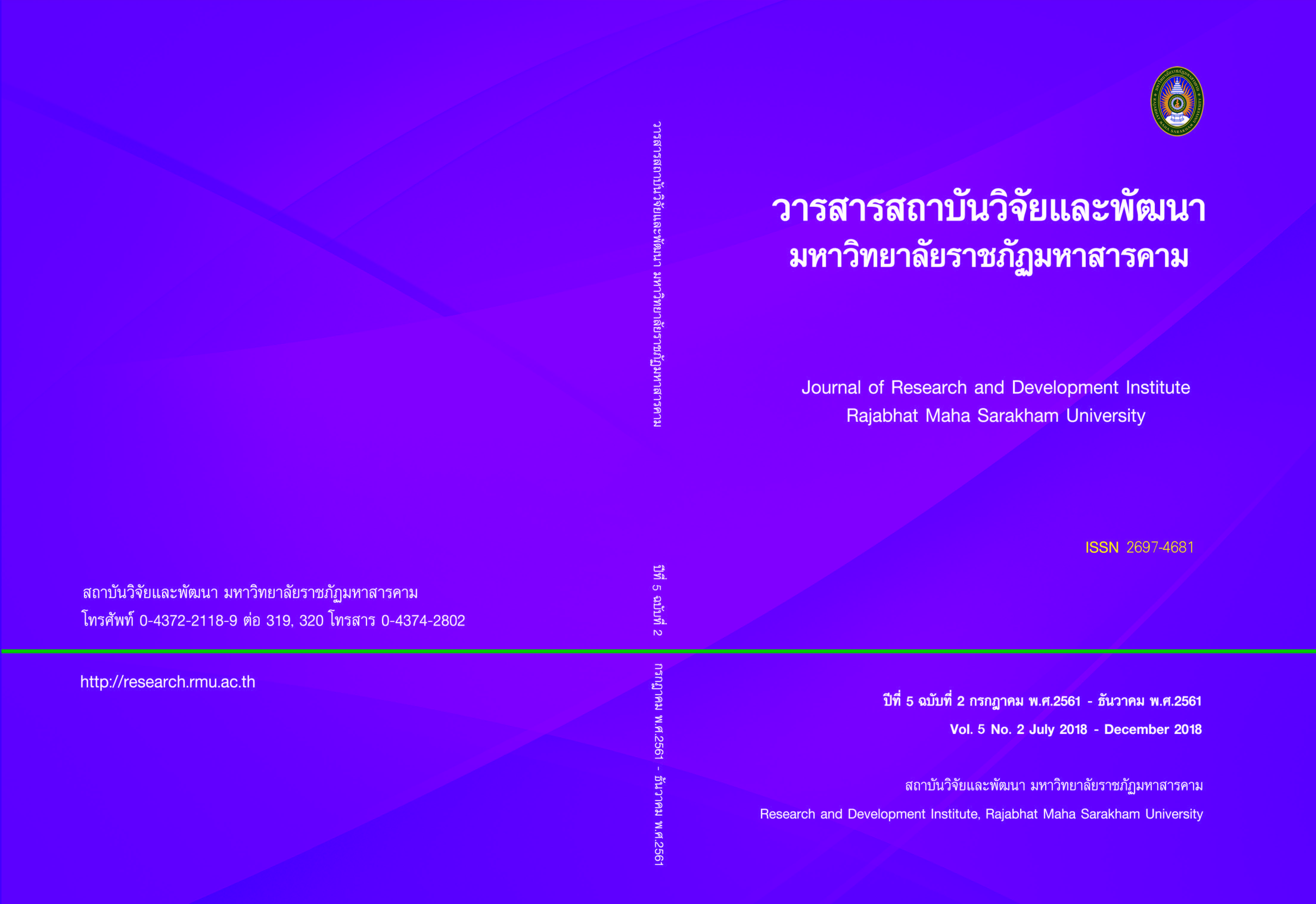The Adaptation of People in Prevention and Mitigation Flooding in Thakhonyang Sub- District, Kantarawichai District, Maha Sarakham Province
Keywords:
Adaptation, Prevention and Mitigation FloodingAbstract
Natural disasters occur in each year around the world which has been cause of losses such as loss of body, life and property are enormous. Even though, the development of science to reduce losses has been occurredition. But human beings cannot overcome nature. Flood is the most often natural disasters occur in Thailand. Nonetheless, human actions are a part of every disaster, such as deforestation, inappropriate urban planning or rapid urban growth. Therefore, educating the preparation of prevention and raising awareness of protecting life and property are considered to be important in helping to alleviate violence and reduce the loss of the flood. The purpose of this research is to study and suggest about the difficulty on as well as the impact from the adaptation to prevent and recover from flood disaster of the people in Thakhonyang sub-district, Kantarawichai district, Maha Sarakham province. The people in this study represent those who have experienced and were in a flood disaster in the high-risk flooding area. The research instrument is the interview and analysis of data and information from the interview, comments, and suggestions, utilizing the Content Analysis approach, which is presented by narration. The research results found that the adaptation to prevent and recover from flood disaster of the people in Thakhonyang sub-district, Kantarawichai district, Maha Sarakham province, on the aspect of loss acceptance, the most of interviewees can accept the loss since it is caused by natural disaster, and is able to normally participate in the community activities; while some of interviewees cannot accept the loss due to the lack of residence. On the aspect of minimizing the loss, the interviewees plan and prepare to minimize the loss, for example, moving away from the river bank and building the house on a higher ground or leveling up the ground for building the house.
However, the interviewees would like the public sector to continuously and affirmatively support, and better the water management such as building the levee. Moreover, the aspect of acquiring new options to alleviate the seriousness of the loss, the interviewees state that they would not move anywhere because they have been living in the area since they were born, and they do not have enough capital to do so. Also technology should be used in production to increase the products. Furthermore the Government should support the training on production and agricultural product processing to increase people’s revenue. Apart from that interviewees state that the public sector should provide more support on and tangible sample of how to do the agriculture. On the other hand some of interviewees are looking for new area to settle down.
References
Department of Disaster Prevention and Mitigation. (2013). Information on Flood and Mudslide Areas 2013. Bangkok : Department of Disaster Prevention and Mitigation. [In Thai].
Department of Public Works and Town & Country Planning. (2010). The Study Project of Principles of Feasibility Study and Design Flood Protection System in Community Area, Mahasarakham Province. Bangkok : Department of Public Works and Town & Country Planning. [In Thai].
Manat Suwan. (2005). The Response to the Natural Hazards' People : The Analysis Event's Thailand. Chiang Mai : Department of Geography, Faculty of Social Sciences, Chiang Mai University. [In Thai].
Office of Disaster Prevention and Mitigation, Mahasakham Province. (2014). Information of Flood Risk Areas. Mahasakham : Office of Disaster Prevention and Mitigation, Mahasakham Province. [In Thai].
Sitthisak Thoathuree. (2003). Perception and Adaptation to Relieve from Floods Hazard of Ban Namkho’s People 2001. Master of Arts Independent Study (Human and Environment Management), Chiang Mai University. [In Thai].
Srisuporn Srisuparb. (2001). Flood Mitigation of Hat Yai Municipality, Songkla Provine on 21 -25 November 2000. Bangkok : Office of Water Management and Hydrology. [In Thai]. Supang Chantavanich. (2005). Qualitative Research Methodology. 13th Edition. Bangkok : University. [In Thai].
Suraphon Promgun. (2011). Research Methods in Political Science. Bangkok : Odeon Store. [In Thai].
Downloads
Published
How to Cite
Issue
Section
License
Articles that are published are copyrighted by the authors of the articles







